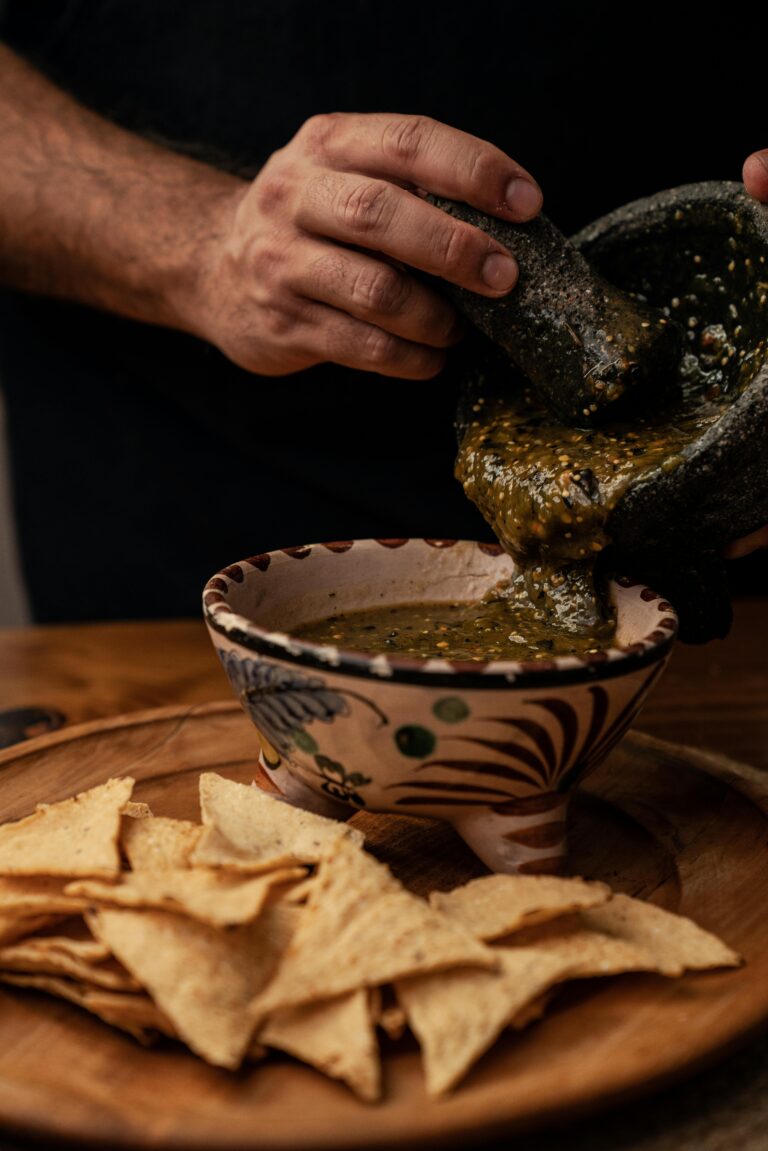
Lentil soup is a hearty and comforting dish that’s perfect for any season. Whether it’s a homemade lentil soup or a store-bought favourite, knowing how to store, freeze, and thaw it properly can help you enjoy its flavors for longer. In this post, we’ll explore the shelf life of lentil soup, the best ways to store this hearty soup in the fridge, and how to freeze and safely thaw your delicious soup.
How Long Does Lentil Soup Last in the Fridge?
The shelf life of lentil soup depends on various factors, such as the type of lentils used, for example, green lentils or red lentils, the quality of ingredients, and the storage conditions. In general, cooked lentil soup can last for about 3-4 days in the refrigerator. To extend its freshness, store it in an airtight container as soon as it reaches room temperature after cooking. This prevents the growth of bacteria and helps maintain the best quality.
Suggested: Vegan Lentil Soup Recipe
How to Store Lentil Soup
Storing Lentil Soup in the Fridge
- Allow the soup to cool slightly at room temperature.
- Transfer the soup to an airtight container or storage container with a tight-fitting lid.
- Refrigerate the soup within 2 hours of cooking to ensure its safety and quality.
- Make sure the soup is stored away from strong-smelling foods to prevent flavor transfer.
Freezing Lentil Soup
Freezing is a great option if you have leftover lentil soup or want to make a big batch in advance. For best results, follow these steps:
- Allow the homemade lentil soup cool completely before freezing.
- Use a freezer-safe container or resealable freezer bags. Remove as much air as possible from the bags to prevent freezer burn.
- Leave some space at the top of the container or bag as the soup will expand when frozen.
- Label containers with the date for easy tracking.

Thawing Frozen Lentil Soup
When it’s time to enjoy your frozen lentil soup, follow these methods for safe thawing:
- Refrigerator Method: Transfer the frozen soup from the freezer to the refrigerator and allow it to thaw overnight. This gradual thawing prevents significant temperature shift and maintains the soup’s quality.
- Cold Water Method: Place the plastic container of frozen soup in a sealed plastic bag, like a large Ziploc bag and submerge it in cold water. Change the water every 30 minutes until the soup is thawed.
- Stovetop Method: If you’re in a hurry, you can gently reheat the frozen soup in a pot on low heat. Add a little water to prevent sticking and ensure even heating. You can even add it to a slow cooker and cook on low until fully heated.
Remember, lentil soup freezes well, but its texture might have a slight change after thawing due to the different types of lentils and vegetables. Despite this, the flavor and essential nutrients remain intact, making it a convenient and delicious option for busy days.
Suggested: Try this Traditional Scottish Lentil Soup Recipe
How Long Does Lentil Soup Last After It’s Thawed Out
After lentil soup has been thawed out, its shelf life in the refrigerator is similar to freshly cooked soup. Thawed lentil soup should be consumed within 3-4 days to ensure its quality and safety.
When you thaw the soup in the refrigerator, you are essentially returning it to a chilled environment, which slows down bacterial growth. This is why the same guidelines for storing freshly cooked lentil soup apply to thawed soup. It’s crucial to store the thawed soup in an airtight container to prevent contamination and maintain its freshness.
If you’re unable to finish the thawed lentil soup within the 3-4 day period, you might consider freezing the remaining portions again. However, keep in mind that each freeze-thaw cycle can affect the texture and quality of the soup to some extent.
To sum up, once lentil soup is thawed, treat it as you would freshly cooked soup, and consume it within 3-4 days to enjoy it at its best.

How to Tell if Lentil Soup Has Gone Bad
Detecting whether lentil soup has gone bad is essential to ensure your safety and prevent consuming spoiled food. Here are some signs to look out for when determining if your lentil soup has gone bad:
- Off Odor: If the lentil soup emits a foul or unpleasant odor, it’s a clear indicator that it has started to spoil. Trust your sense of smell – if it smells off, it’s best to avoid consuming it.
- Unusual Appearance: Examine the soup for any mold growth, discoloration, or strange texture. If you notice any fuzzy patches, unusual colors, or slimy texture, it’s a sign that the soup is no longer safe to eat.
- Texture Changes: Spoiled lentil soup may have a slimy or mushy texture. Lentils that have broken down excessively can also indicate spoilage.
- Off-Taste: If the lentil soup tastes sour, bitter, or generally off from its usual flavor, it’s a sign that the soup has gone bad.
- Gas Formation: If the soup appears to have excessive bubbling, fizzing, or gas formation, it could be due to the growth of harmful bacteria, which indicates spoilage.
- Expired Shelf Life: If the soup has been in the fridge for an extended period beyond the recommended storage time (typically 3-4 days), it’s better to err on the side of caution and discard it.
Remember that lentil soup, like any other food item, can pose a risk of foodborne illness if consumed when spoiled. It’s always better to prioritize your health and safety by avoiding any questionable foods. If you’re uncertain about the freshness of your lentil soup, it’s best to discard it to avoid the risk of food poisoning or discomfort.
Can You Get Food Poisoning From Lentil Soup
Yes, it is possible to get food poisoning from lentil soup or any other type of soup if it has been prepared, stored, or handled improperly. Bacteria, such as Salmonella, E. coli, and Listeria, can thrive in foods like soups when they are not cooked, stored, or reheated correctly. Here are some factors that can lead to food poisoning from lentil soup:
- Improper Cooking: If the lentils are not cooked at the right temperature or for the appropriate amount of time, harmful bacteria may survive, leading to foodborne illnesses.
- Cross-Contamination: If the lentil soup comes into contact with surfaces, utensils, or ingredients that are contaminated with bacteria from raw meat, poultry, or other sources, it can lead to food poisoning.
- Insufficient Reheating: If leftover lentil soup is not reheated to a safe temperature (usually 165°F or 74°C), any bacteria present in the soup may not be fully killed, increasing the risk of illness.
- Inadequate Storage: Leaving lentil soup at room temperature for extended periods or not properly storing it in the refrigerator can allow bacteria to multiply and cause food poisoning.
- Consuming Expired Soup: Eating lentil soup that has been stored beyond its recommended shelf life can increase the chances of foodborne illness.
- Hygiene Practices: Poor hand hygiene and improper food handling practices can introduce bacteria into the soup during its preparation.
How to minimize the risk of food poisoning from lentil soup
- Cook lentils thoroughly, following recommended cooking times and temperatures.
- Practice good hygiene by washing hands, utensils, and surfaces before and after handling food.
- Keep cooked lentil soup out of the “danger zone” (40°F – 140°F or 4.4°C – 60°C) to prevent bacterial growth.
- Store leftovers in airtight containers in the refrigerator within two hours of cooking.
- Reheat leftover soup to an internal temperature of 165°F (74°C) before consuming.
- Pay attention to signs of spoilage, such as off odor, unusual appearance, or unusual taste, and discard any soup that seems questionable.
By following proper food safety practices, you can greatly reduce the risk of getting food poisoning from lentil soup or any other type of food.

Tips for Keeping Lentil Soup Fresh
Keeping lentil soup fresh involves proper cooking, storage, and handling practices. Here are some tips to ensure your lentil soup remains flavorful, safe, and enjoyable:
- Proper Cooking: Cook lentils thoroughly to ensure they’re soft and fully cooked. Undercooked lentils can affect the texture and taste of the soup.
- Quality Ingredients: Use fresh, high-quality ingredients to enhance the flavor and nutritional value of the soup.
- Hygiene: Wash your hands, utensils, and cooking surfaces before and after handling food to prevent cross-contamination.
- Cooling Quickly: Allow the soup to cool slightly at room temperature before transferring it to an airtight container. This prevents condensation and helps maintain the soup’s consistency.
- Airtight Containers: Store cooked lentil soup in airtight containers to prevent the absorption of odors and flavors from other foods in the refrigerator.
- Labeling: Label containers with the date of preparation to keep track of how long the soup has been stored.
- Refrigeration: Refrigerate lentil soup within two hours of cooking. Place the container on a high shelf rather than the refrigerator door to maintain a consistent temperature.
- Quick Consumption: Plan to consume leftovers within 3-4 days to ensure optimal freshness and taste.
- Freezing: If you won’t be able to finish the soup within a few days, consider freezing portions in airtight containers. This can extend the shelf life for several months.
- Thaw Gradually: When reheating frozen lentil soup, thaw it in the refrigerator overnight rather than using quick methods to ensure even heating.
- Reheating Safely: Reheat the soup to at least 165°F (74°C) to eliminate any bacteria that may have multiplied during storage.
- Avoid Double-Dipping: When serving soup, use a clean utensil each time to prevent introducing bacteria from one serving to the entire batch.
- Flavor Enhancement: Consider adding fresh herbs, a splash of lemon juice, or a drizzle of olive oil when reheating to revive flavors.
- Inspect Before Consuming: Before consuming leftover soup, check for off odors, unusual colors, or signs of spoilage. If in doubt, it’s safer to discard it.
By following these tips, you can ensure that your lentil soup remains delicious, safe, and satisfying from the first spoonful to the last.
Frequently Asked Questions
How Long Do Cooked Lentils Last In Fridge
Cooked lentils can last in the fridge for about 3-5 days when stored properly in an air-tight container. To maximize their freshness, transfer the lentils to an airtight container while they’re still warm and allow them to cool to room temperature before refrigerating. Label the container with the date of preparation to keep track of their shelf life. If you can’t consume them within this timeframe, consider freezing the cooked lentils in portion-sized containers to extend their usability for up to 3 months.
How Long Do Canned Lentils Last In Fridge
Canned lentils, once opened, can last in the fridge for about 3-4 days. Transfer any unused portion to an airtight tupperware container and refrigerate promptly. To extend their freshness, consider freezing leftover canned lentils in a sealed container for up to 2-3 months. Always check for signs of spoilage, such as off odor, unusual texture, or mold, before consuming.
How Long Does Unopened Canned Lentil Soup Last
Unopened canned lentil soup can last for an extended period, usually up to 1-2 years beyond the printed “best by” or “use by” date on the can. To ensure the best quality, store the unopened cans in a cool, dry place. Always check for any signs of damage or rust on the can before consuming the soup.
How Long Does Lentil Soup Last After Its Thawed Out
After lentil soup has been thawed out, its shelf life in the refrigerator is similar to freshly cooked soup. Thawed lentil soup should be consumed within 3-4 days to ensure its quality and safety. To maintain its flavor and texture, store the thawed soup in an airtight container and promptly refrigerate it after thawing. If you can’t finish it within the recommended timeframe, consider portioning and freezing the remaining soup for longer storage.
Other Foods You Can Freeze…
Conclusion
Understanding the storage, freezing, and thawing processes for lentil soup ensures you’ll always have a comforting meal ready to enjoy. Whether you’re a fan of red, green, brown, or yellow lentils, these tips will help you make the most of this versatile and nutritious dish.

Christopher is a food and lifestyle expert, recipe developer and the content creator behind May Eighty Five. With years of experience in the kitchen, he also shares tips, tricks and how to’s that he has learnt over the years. Every week, he shares quick, simple and mostly healthy recipes along with some home and entertaining tips. You will find flavorful cocktails, delicious appetizers, tasty mains and some indulgent desserts. As a home decor enthusiast, he also likes to share simple DIY projects and simple tips for a beautiful home.






